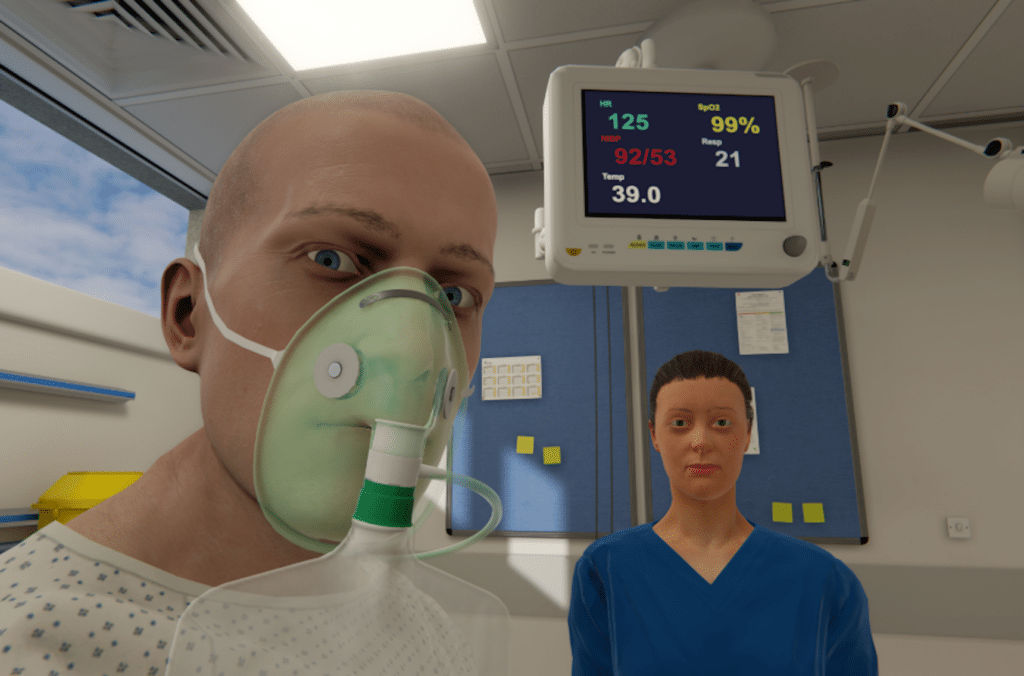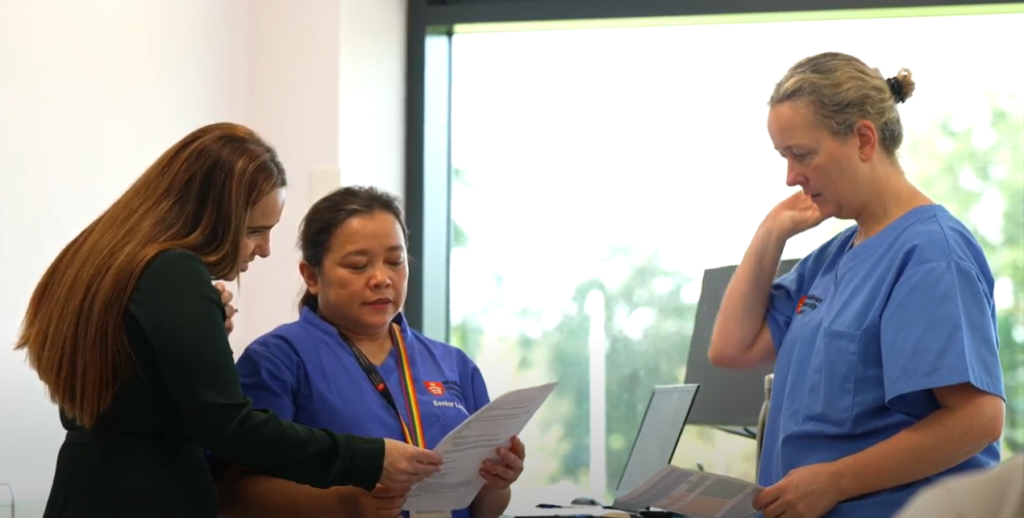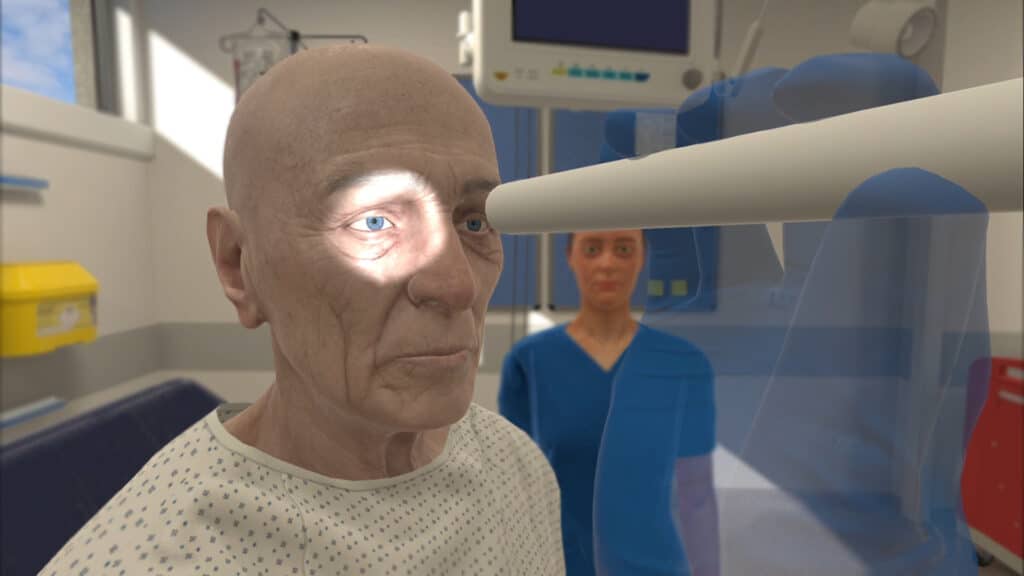In the middle of London sits Middlesex University, a top-ranked school for Nursing & Midwifery. With a £23m state-of-the-art health facility and one of the highest-ranked providers globally for student satisfaction, Middlesex University is dedicated to advancing healthcare education and training.
The team at Middlesex University works to ensure that students are successful in their didactic learning and can safely apply their knowledge and skills in the clinical setting.
The continued dedication to students’ readiness to practice goes beyond the classroom and into practice, with 90% of Middlesex University postgraduates working in nursing roles within 6 months of graduation.
To best prepare students for entering the nursing profession, students participate in various activities to reinforce key concepts and bridge the gap between theory and practice.
With continued focus on expanding offerings and driving healthcare education forward, the team at Middlesex University sought to bring cutting-edge technology into the fold by incorporating virtual reality into their nursing curriculum.
Why did Middlesex University choose VR for their nursing students?
Virtual reality offers another avenue for individual or team learning. It places students in a leadership role to direct care and focuses on the application of skills like clinical decision-making, clinical judgment, critical thinking, and the priority of care.
As every person learns differently, VR ensures that each student gets an opportunity to hone their skills without needing to rely on others for input.
As technology continues to advance rapidly and expand its uses, many younger students remain up to date with the most recent developments, expecting that this type of learning will be accessible to them in their respective fields.
The team at Middlesex University chose OMS as their VR partner to facilitate the transfer of clinical knowledge and skills to practice, engage learners individually, and remain at the forefront of incorporating cutting-edge technology into the curriculum.
How the team at Middlesex University use VR scenarios to facilitate student learning
Breadth & depth of practice
Heading into the fall of 2024, Middlesex is expanding its VR use, ensuring students of all levels will have a chance to participate in VR nursing simulation. First-year students will begin to apply their knowledge and get familiar with the clinical setting, preparing for the transition to practice in their first clinical placement.
Meanwhile, more advanced learners, like the second—and third-year students, will learn procedural skills, like urinary catheterization, and reinforce skills like clinical decision-making or the priority of care in OMS scenarios.
Faculty use these scenarios for both individual and group-based learning opportunities. Simulations are incorporated into didactic sessions and can be the basis for case-based learning and group discussions.
As students return from clinical placements, VR simulations in a group format allow them to share their relevant clinical experiences. This can provide valuable input for students who did not have the opportunity to see the manifestation of certain conditions or the ability to work in certain areas of care.
Understanding the nursing role
These simulation sessions help prepare students for eventualities that can happen in the clinical setting, exposing them to situations they may not otherwise see. In these settings, students have a chance to safely make mistakes and independently lead patient care, cementing their understanding of what it means to be a nurse in practice.

Remote access to immersive learning
Students can even access these nursing scenarios outside the classroom, engaging in learning at their own pace while remaining in a safe and structured learning environment.
Students have discussed the realism and immersion of the VR scenarios, as well as the immediate, evidence-based feedback, as particularly beneficial for debriefing discussions and independent repetition of skills.
As one faculty member put it, “Yes, we’ve got loads of fantastic manikins here, but it’s not the same as being immersed into something”.
Clinical confidence and competence
Due to the realism of OMS scenarios, faculty have reported that students experience appropriate stress levels once immersed in the simulation, a key feature in increasing confidence before placement.
Additionally, faculty note higher levels of student engagement, as each student can lead a patient case. There is no passive learning in VR.
In OMS nursing simulations, the student spends time alone with a patient and conducts everything from history taking to examinations, evaluations, and interventions. They create all plans, decide when to escalate care, and work as individuals, just as they would as practicing nurses.
Tracking progress
Faculty can observe these trends and follow the progression of student engagement and success using the data and analytics provided by the platform.
Metrics such as time in the scenario, clinical performance score, and competency tags provide key insights into how theory is applied to professional practice and allow educators to make data-driven decisions on an individual or cohort level.
Educators have also highlighted the importance of the evidence-based feedback provided by the OMS platform. This feedback allows learners to immediately reflect on their actions and repeat as needed.
Additionally, faculty note that the feedback is also used as a “collective learning tool”, allowing students to have a deeper discussion on areas for development and an opportunity to “delve deeper into what they’ve learned and clarify any misconceptions”.
As one faculty member put it: “The value is evident already.”

What using VR has meant for students
When it comes to the value and impact for learners, one faculty member makes it clear:
“I think OMS is the most valuable learning tool that we have in the simulation center.”
Faculty have reported three key areas in which they have seen the biggest impact for students using OMS nursing scenarios:
- Transition to practice
- Individual learning
- Clinical decision-making
Transition to practice
For more advanced learners, VR provides an opportunity to assume the role of a nurse and independently prepare for situations that may arise in their future practice.
“Students have said they feel more confident, they feel proud of themselves.”
Learners gain confidence by working in a safe environment, free to make mistakes, discuss them, and learn from them.
They can develop their skills in a realistic setting before trying it out in the clinical setting for the first time. Additionally, faculty have noted that students have become more familiar with and quickly adopted clinical language. In other instances, students remembered and incorporated key concepts mid-scenario, increasing their confidence in the skills and knowledge gained through classroom work.
Individually, students become empowered through directing patient care. As nursing students become practitioners, it can be “scary going into being a newly qualified nurse without that same support” of always having someone like a professor or clinical supervisor to fall back on, ask questions, or relay information to.
The team at Middlesex University has used virtual reality to help students bridge the gap from student to professional.

Individual learning
Everyone learns differently, so it is important to provide an array of modalities and activities to engage students in various ways to facilitate learning.
In using VR, students get a real sense of understanding the limits of their knowledge and skills, and they are able to experience how they would react in an emergency situation.
In an OMS nursing scenario, students get to interact with patients they are likely to see in real life, and they’re able to repeatedly work through what to do in the event they encounter a deteriorating patient – without ever doing harm to anyone.
The emotional impact of clinical simulation is an important factor to consider as students are able to experience appropriate levels of stress while being required to think critically and act quickly and effectively.
This type of training reinforces to students the expectations of their future role, giving them preparation for the daily responsibilities of practice.
Developing an understanding of how they personally react to stress or panic means students are participating in a level of self-reflection they might not otherwise have until they find themselves in an emergent clinical situation.
When a student leaves a scenario incomplete or struggles significantly with a portion of the simulation, it’s an opportunity rather than a failure. Faculty can observe the student throughout their simulation, and later discuss the self-awareness it takes to remain aware of personal behavior in a time of stress.
Students are reminded that their simulation is safe, and that their mistakes are not hurting patients – scenarios can be run again. These situations, while delicate, are important in bolstering student confidence, learning from mistakes, and developing a plan of action for next time.
Varying types of clinical situations can be used to bring individuals up to speed on scenarios that perhaps some of their classmates experienced on a clinical placement while they have yet to see a similar situation.
It allows for students already familiar with a situation to practice skills they learned while on a clinical placement, whereas for students unfamiliar with the situation, it provides learners with a chance to get familiar with the situation and develop confidence in their ability to handle an emergency.
VR simulations also facilitate an individualized learning experience, as students take on a leadership role in conducting patient care.
However with OMS, students and faculty have experienced learning in a more one-to-one format.
Students each have access to OMS individually, in the classroom or at home, and they must work through simulations independently, standing on their own two feet to coordinate care and optimize patient outcomes.
Clinical decision making
As students navigate clinical simulations independently, they must draw upon their own knowledge and skills to implement timely and appropriate patient care.
Observation of changes in patient condition, recognition of early signs of an emergent situation, or determination of appropriate tests and measures – all of these skills and more are tested and brought into practice in their VR nursing simulations.
Students get a chance to not only make clinical decisions independently, but they also receive immediate feedback upon completion of the scenario, providing another opportunity for reflective thinking and developing a better internal measure of their clinical decision making skills.
Feedback is often used to assist in guiding the debrief – students and faculty discuss topics like time-to-action or order of operations. This type of facilitation following feedback gives students the chance to first self-reflect and then participate in a larger discussion, and it helps students to think critically about what they’ve been doing right and what mistakes they will avoid repeating in the future.
Faculty are able to observe this student progress, from beginning to end, with data to facilitate the identification of trends, track competency, and discern areas in need of further review, such as collective gaps in knowledge or skill application.
In summary
Since implementation, students have completed over 15,000 scenarios, providing students the ability to practice skills repeatedly, building clinical confidence and competence.
With such positive feedback from students and faculty, the team at Middlesex University continues to expand their use of virtual reality to support student enrichment, engagement, and learning.
As one faculty member puts it, “I use it every opportunity I can get” to facilitate professional development, clinical decision making, and support students on their journey to nursing practice.
“There’s a realness to it that I think really enhances the clinical picture that we’re trying to present in classrooms.”
A sentiment echoed by students as well, the realism and immersive nature of OMS nursing simulations provides learners with a rich experiential learning opportunity, reinforcing clinical decision-making skills at an individual learning level and helping students gain confidence and competence as they prepare for the transition to practice.
To learn more about implementing VR at your institution, schedule a time to speak with an Educational Specialist.

